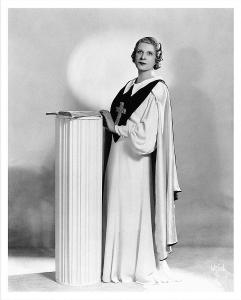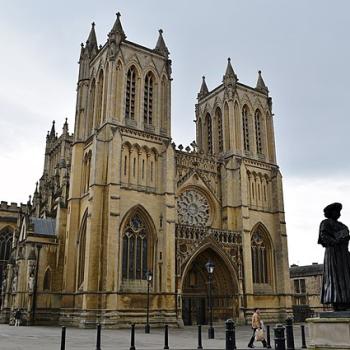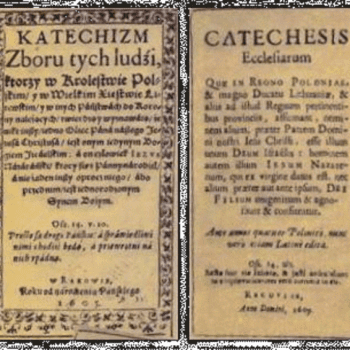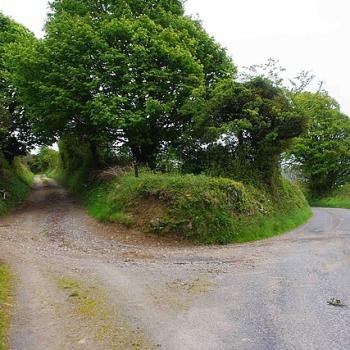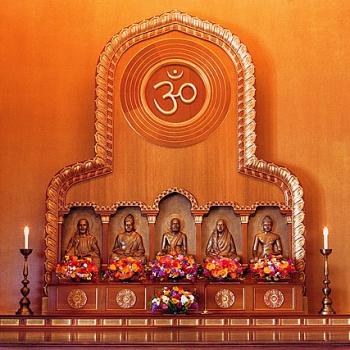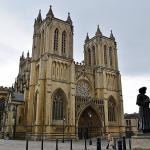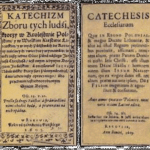“Never did I hear such language from a human being. Without one moment’s intermission, she would talk from an hour to an hour and a half, holding her audience spellbound.”
A reporter’s description cited in Christianity Today
Aimee Semple McPherson died on this day, the 27th of September, in 1944.
The cause of death was a heart attack triggered by what is generally believed to have been an accidental overdose of sleeping pills. Her funeral was a major event in Los Angeles. Estimates vary, between 45,000 and 50,000 people passed through her Angelus Temple, one of the early 20th century megachurches, to view her body. It took eleven trucks to transport the flowers from the Temple to her final resting place in Forest Lawn in Glendale.
She is one of the more remarkable figures of North America’s relatively recent religious history. Several members of my extended family were devotees of Aimee and her teachings. And, I’m always caught for a moment thinking of her as I occasionally drive by her Angelus Temple in in Echo Park.
Aimee Elizabeth Kennedy was born in Salford, Ontario, on the 9th of October, 1890. She was raised a nominal Methodist, although her mother was an active volunteer with the Salvation Army, and she had more experiences of that tradition with her mother’s deep involvement as a volunteer in the church’s social ministries.
Aimee attended a revival meeting in 1907 conducted by an Irish Pentecostal preacher, Robert James Semple. She converted, and not long after, married the evangelist. Aimee soon found she could interpret what was said as people spoke in ecstatic glossolalia. She and Robert were ordained together by the Pentecostal minister, the Reverend William Durham in 1909.
The couple went to China to preach, but both contracted malaria. He died in Hong Kong. Their daughter was born there not long after. Back in the United States she me Harold Stewart McPherson, and they were married in 1912. Together they had a son.
It appears she thought her time in ministry was over. But, in 1914 while recovering from surgery she felt a voice calling her to go and preach. Aimee convinced her husband of her calling and the two sold their home and created a “gospel car,” to take her on the road preaching. Soon Mr McPherson’s enthusiasm cooled, he returned to their former home in Providence, and in 1921 divorced her for “abandonment.”
She then married actor and musician David Hutton in 1932. A year later they separated. And a year after that they divorced.
All along she continued preaching. In 1919 she attracted new media through faith healings conducted at the Lyric Opera House in Baltimore. Although the year before she had actually made Los Angeles her base of operations. And it was there she would gain her greatest fame and notoriety. With the publicity from Baltimore her team rented LAs Philharmonic Auditorium and she was able to fill the 3,500 seats.
In 1923 her own church, the Angelus Temple was dedicated. It could sit more than 5,000 people. Always conscious of publicity, the Temple was advertised as the largest single Christian congregation “in the world.” Her ministry included charitable and social work.
In a sermon she preached in 1922 she outlined a “Foursquare Gospel,” a ministry based in Jesus as Savior, Baptizer with the Holy Spirit, Healer, and King. For a while she worked in association with the nascent Assemblies of God. She created a Bible College to serve as a seminary. Theologically her preaching ministry was described as blending Methodist principles with Pentecostalism.
The Reverend Ms McPherson was a flamboyant character, fond of publicity, and pageantry. She had no clear political agenda, beyond being fiercely opposed to Evolution, and it appears to have rejected extremisms of the right and left, although supportive throughout her life of organized labor.
In 1926 she left for a walk on the beach, and disappeared. Three days later she reappeared in Douglas, Arizona. She claimed she’d been kidnapped, but had escaped. Law enforcement seems to have thought she had not been kidnapped, but the DA after first charging her, eventually declined to prosecute her for filing a false police report.
Her popularity declined, but her ministry continued. Throughout the Great Depression she and her associates opened and sustained soup kitchens, and free clinics. To her undying credit she never distinguished between deserving and undeserving, without color tests, or citizenship status; and her ministries became a beacon for charitable work.
Eventually, her work generated a denomination, the Foursquare Church, which claims 8,000,000 members gathered in 67,500 congregations around the world.
As I think of her, flamboyant Pentecostal, married and divorced, something of a classic publicity hound, astonishing preacher, and charismatic presence; I think a perfect example of Los Angeles or maybe SoCal spirituality.
Our lady.
May the ill she did fall away and the good continue on…


